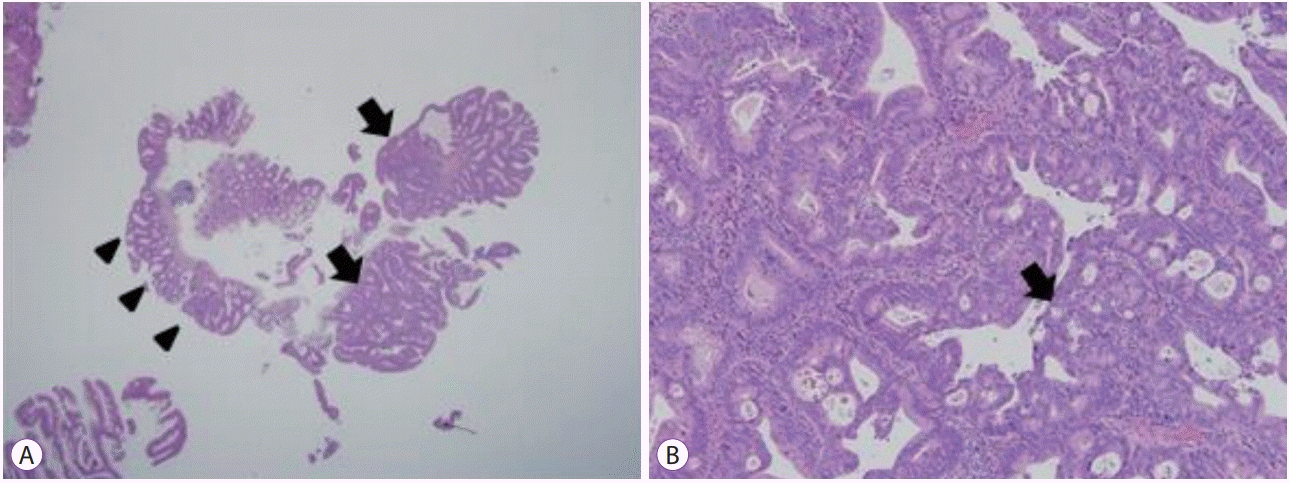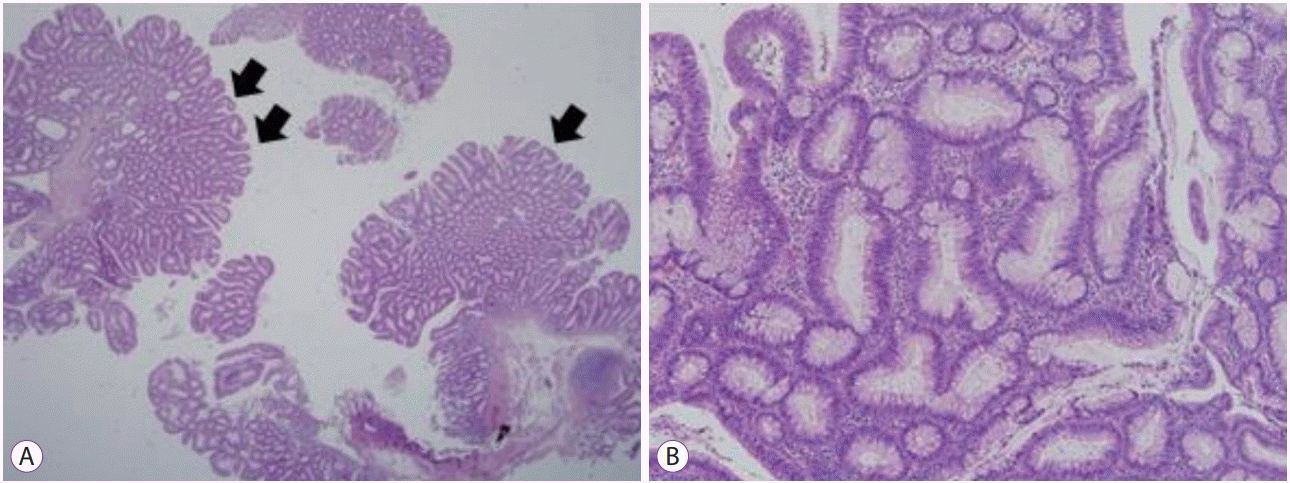1. Wilkins EW Jr. Long-segment colon substitution for the esophagus. Ann Surg. 1980; 192:722–725.

2. Briel JW, Tamhankar AP, Hagen JA, et al. Prevalence and risk factors for ischemia, leak, and stricture of esophageal anastomosis: gastric pull-up versus colon interposition. J Am Coll Surg. 2004; 198:536–541. discussion 541-542.
3. Lee K, Kim HR, Park SI, Kim DK, Kim YH, Choi SH. Surgical outcome of colon interposition in esophageal cancer surgery: analysis of risk factors for conduit-related morbidity. Thorac Cardiovasc Surg. 2018; 66:384–389.

4. DeMeester SR. Colonic interposition for benign fisease. Oper Tech Thorac Cardiovasc Surg. 2006; 11:232–249.
5. Fenoglio CM, Kaye GI, Lane N. Distribution of human colonic lymphatics in normal, hyperplastic, and adenomatous tissue. Its relationship to metastasis from small carcinomas in pedunculated adenomas, with two case reports. Gastroenterology. 1973; 64:51–66.
6. Ko OB, Byeon JS, Kim MJ, et al. Clinical outcomes of colonic mucosal cancers with histologically positive or uncertain resection margin after endoscopic resection. Hepatogastroenterology. 2014; 61:65–69.
7. Regula J, Wronska E, Polkowski M, et al. Argon plasma coagulation after piecemeal polypectomy of sessile colorectal adenomas: long-term follow-up study. Endoscopy. 2003; 35:212–218.

8. Tsiamoulos ZP, Bourikas LA, Saunders BP. Endoscopic mucosal ablation: a new argon plasma coagulation/injection technique to assist complete resection of recurrent, fibrotic colon polyps (with video). Gastrointest Endosc. 2012; 75:400–404.

9. Lee BI, Hong SP, Kim SE, et al. Korean guidelines for colorectal cancer screening and polyp detection. Clin Endosc. 2012; 45:25–43.

10. Cairns SR, Scholefield JH, Steele RJ, et al. Guidelines for colorectal cancer screening and surveillance in moderate and high risk groups (update from 2002). Gut. 2010; 59:666–689.

11. Lieberman DA, Rex DK, Winawer SJ, Giardiello FM, Johnson DA, Levin TR. Guidelines for colonoscopy surveillance after screening and polypectomy: a consensus update by the US Multi-Society Task Force on Colorectal Cancer. Gastroenterology. 2012; 143:844–857.

12. Goldsmith HS, Beattie EJ Jr. Malignant villous tumor in a colon bypass. Ann Surg. 1968; 167:98–100.

13. Hwang HJ, Song KH, Youn YH, et al. A case of more abundant and dysplastic adenomas in the interposed colon than in the native colon. Yonsei Med J. 2007; 48:1075–1078.

14. Lee S, Kim ES, Chung WJ, et al. A case of colon cancer developing at the interposed graft for treatment of benign esophageal stricture. Keimyung Medical Journal. 2010; 29:138–142.
15. Kim ES, Park KS, Cho KB, Kim MJ. Adenocarcinoma occurring at the interposed colon graft for treatment of benign esophageal stricture. Dis Esophagus. 2012; 25:175.








